The Best Go Tools to Use in 2025: A Developer’s Guide
In this article, we’ll explore the best tools for Go development in 2025, providing insights into their features, benefits, and where to get started.
In the world of programming, Go (or Golang) has earned its spot as one of the most significant and efficient languages for backend development. Released by Google in 2009, Go is designed to solve many of the issues developers face when working with older programming languages, such as slow compilation, concurrency management, and high memory consumption. Its simplicity, performance, and robust concurrency support have made it the backbone of many cloud-native applications.
As we step into 2025, the demand for Go continues to grow, powered by its seamless compatibility with containers, microservices, and large-scale distributed systems. So whether you're a beginner in the Go world or an experienced developer, you’ll need the right set of tools to streamline your development experience.
In this article, we’ll explore the best tools for Go development in 2025, providing insights into their features, benefits, and where to get started.
Why Go Is Important in 2025

Go remains a language of choice for high-performance applications for several compelling reasons:
- Concurrency-Friendly: Go provides built-in support for concurrency through goroutines and channels, which are ideal for cloud-based and distributed systems.
- Simplicity: Its syntax is clean and easy to learn, making it accessible to both newcomers and seasoned developers.
- Performance: Go combines the performance of C/C++ with the simplicity of modern languages.
- Extensive Ecosystem: With its integration with Docker, Kubernetes, and other DevOps tools, Go has become the default language for many cloud infrastructures.
- Scalability: Go is widely used in microservices architecture, enabling developers to build scalable systems efficiently.
Popular Uses of Go: APIs, web servers, command-line tools, cloud-native implementations, and scalable backend systems.
With Go’s rising popularity and dominance in the cloud ecosystem, developers are equipping themselves with specialized tools tailored for Go to maximize productivity. Let’s dive into some of the best tools available in 2025.
Top Tools for Go Developers in 2025
Here are the essential tools every Go developer should master this year:
1. GoLand
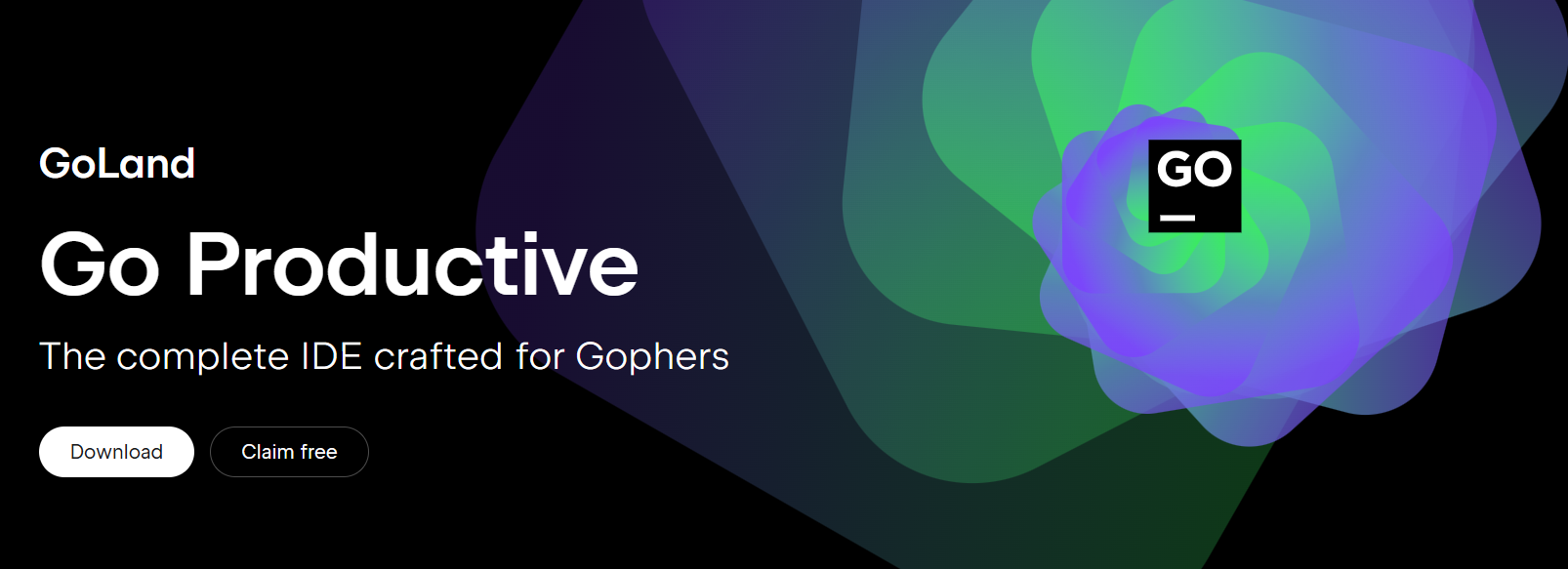
Developed by JetBrains, GoLand is a premium integrated development environment (IDE) designed specifically for Go development. It provides deep code understanding, error checking, and built-in support for Go modules and frameworks.
What Makes GoLand Special?
- Intelligent Code Completion: The IDE analyzes your code to provide highly accurate code suggestions.
- Built-in Debugging and Testing Tools: Simplifies catching bugs and running tests.
- Refactoring Tools: Helps to refactor code and improve maintainability without breaking functionality.
- Version Control Support: Built-in Git, GitHub, and Mercurial integration.
- Extensible Plugin Ecosystem: Add features to suit your project requirements.
Advantages:
- Sleek interface designed for productivity.
- Robust support for large-scale Go projects.
- Excellent testing integration for TDD (Test-Driven Development).
Downsides:
- Requires a paid license (though worth the investment for serious developers).
- Slightly resource-heavy compared to lightweight editors.
2. Visual Studio Code (VS Code)
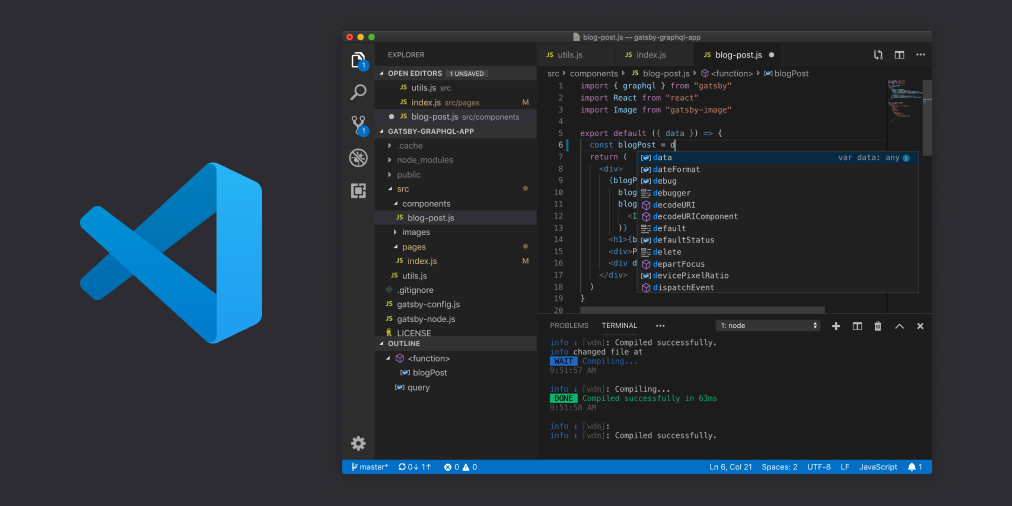
Visual Studio Code, by Microsoft, is a highly popular, free, and customizable code editor. With the addition of the Go plugin maintained by the Go team, VS Code becomes a robust tool for Go development.
What Makes VS Code Special for Go?
- Lightweight: Runs efficiently on almost any system.
- Extensive Marketplace: Thousands of extensions available, including the official Go extension.
- Built-in Git Integration: Seamless version control without leaving the editor.
- Debugging Support: Integrated debugging for Go applications using the Delve debugger.
Advantages:
- Free and open-source.
- Flexible to configure for any programming language.
- Rich plugin ecosystem for custom workflows.
Downsides:
- Can require more configuration than specialized IDEs like GoLand.
- Performance may degrade with excessive extensions.
3. gofmt and goimports

These formatting tools are essential for ensuring code consistency in Go projects.
gofmt:
Automatically formats Go code according to the language's built-in style. It’s part of the standard Go toolchain.
goimports:
An extension of gofmt that automatically imports any missing packages as you format your code.
Advantages:
- Ensures clean, consistent, and readable code.
- Eliminates debates over code style within teams.
Downsides:
- No downsides if it’s integrated into your workflow properly.
4. Delve Debugger

Debugging complex issues in Go becomes much simpler with the Delve debugger. A command-line tool designed for Go specifically, it allows developers to set breakpoints, inspect variables, and step through code efficiently.
Why Use Delve?
- Provides advanced debugging features for Go.
- Integrates seamlessly with IDEs like GoLand and VS Code.
- Optimized for understanding Go’s execution model.
Advantages:
- Pinpoint bugs faster with detailed trace analysis.
- Excellent performance, even with large codebases.
Downsides:
- Command-line interface may intimidate new developers (though most IDEs integrate Delve for simplicity).
5. Gin Framework
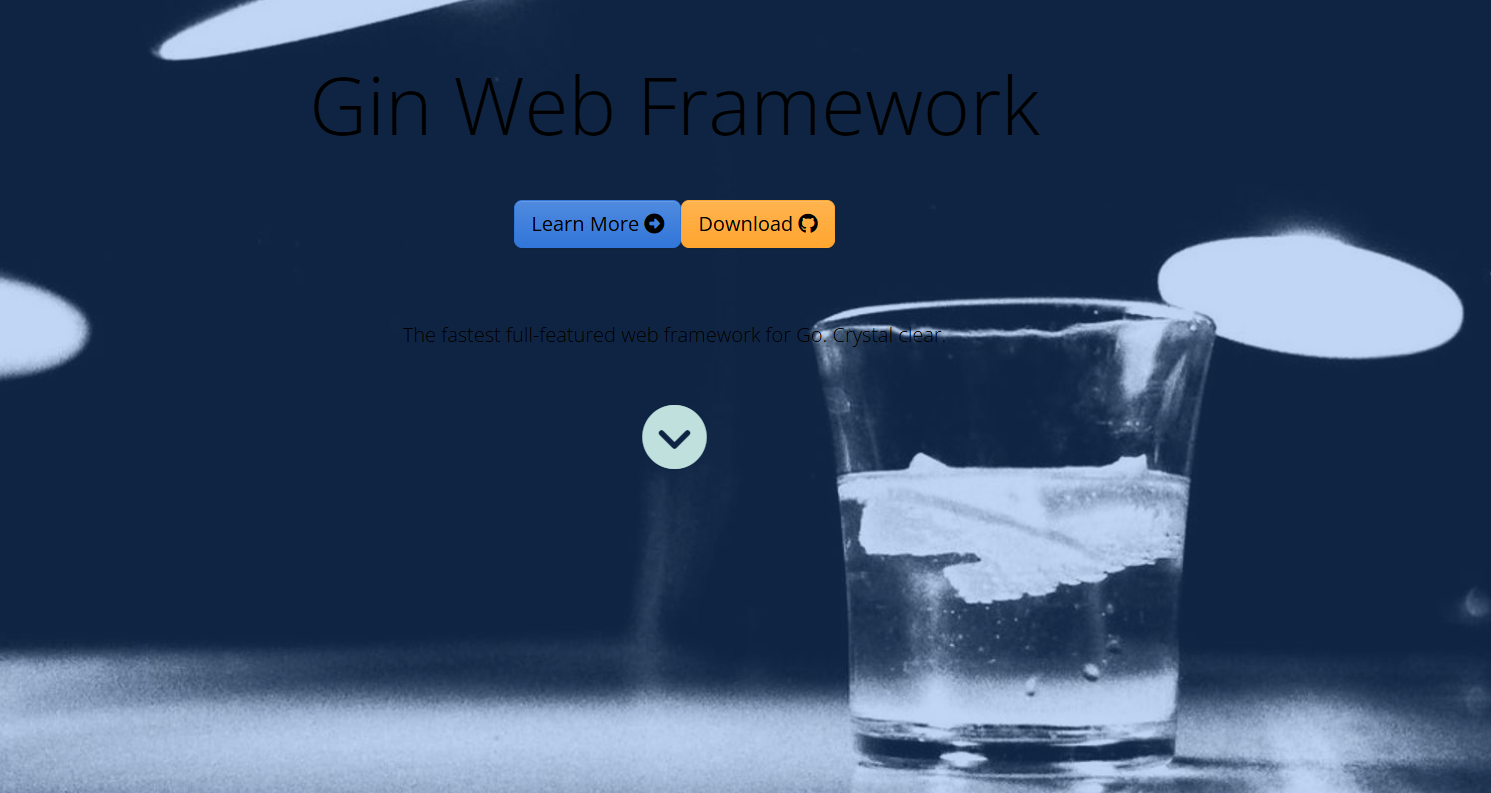
For building high-performance web APIs in Go, the Gin framework is a top choice. With its minimalist and fast design, Gin simplifies handling HTTP requests and responses, making it perfect for microservices.
Why Gin?
- Fast Router: Based on the net/http package but optimized for speed.
- Middleware Support: Includes built-in capabilities for handling logging, CORS, and other essential functionalities.
- JSON Validation: Provides easy handling of JSON input/output.
Advantages:
- Ideal for creating RESTful services.
- Lightweight, making it efficient for high-traffic applications.
Downsides:
- Minimalist design may not suit more complex requirements without additional modules.
6. Docker
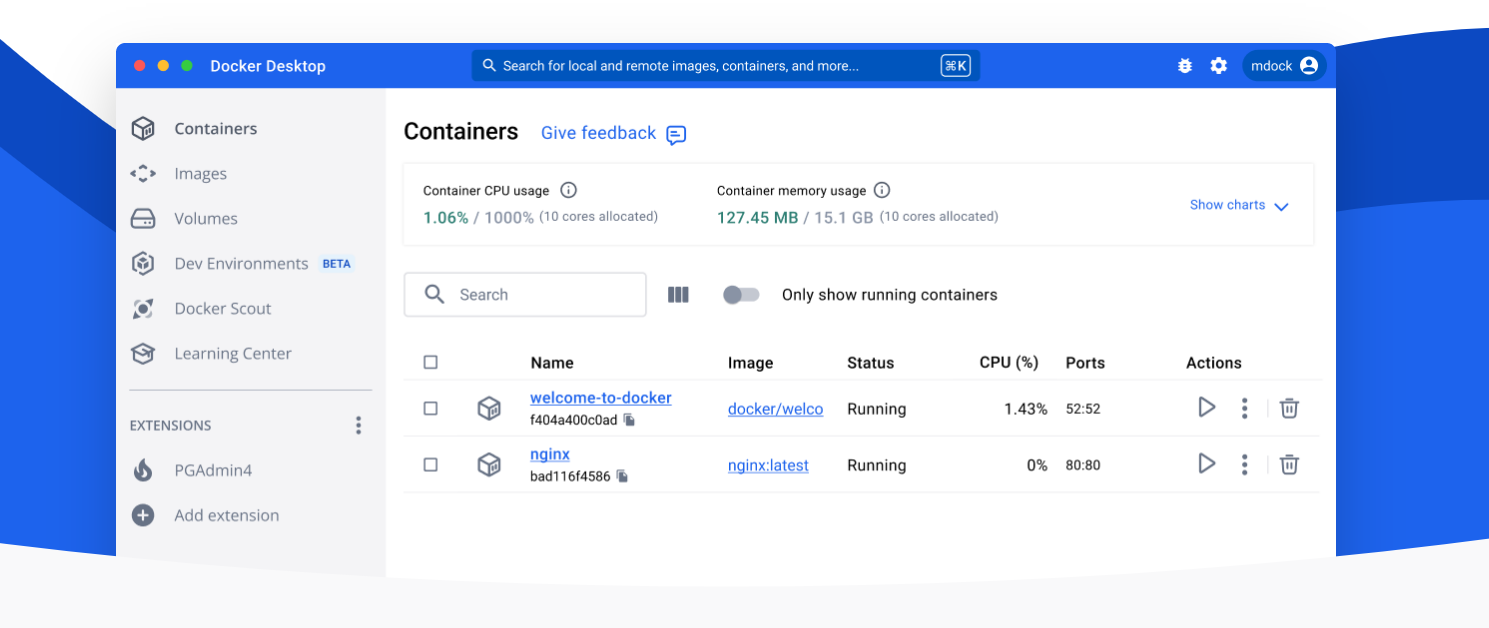
As cloud-native development dominates, Docker is a must-have for Go developers. Docker enables you to package Go applications into containers that can run on any system without worrying about platform-specific configurations.
Why Docker?
- Simplifies deployment processes.
- Ensures consistent development environments.
- Works seamlessly with microservices architecture.
Advantages:
- Platform agnostic.
- Extremely reliable for managing dependencies in Go applications.
Downsides:
- Has a steep learning curve for complete beginners.
7. Swagger/OpenAPI for API Documentation

Creating and sharing well-documented APIs is simplified using Swagger (now called OpenAPI). It’s a toolset that helps generate interactive API documentation based on source code or pre-defined specifications.
Why Swagger for Go APIs?
- Code-Generated Documentation: Auto-generates docs from your Go code.
- Interactive API Testing: Teams can test API endpoints right from the browser.
- Improves Transparency: Facilitates clear communication between developers and stakeholders.
Advantages:
- Ensures consistency in API descriptions.
- Saves time compared to manual documentation.
Downsides:
- Requires learning OpenAPI specifications initially.
8. EchoAPI
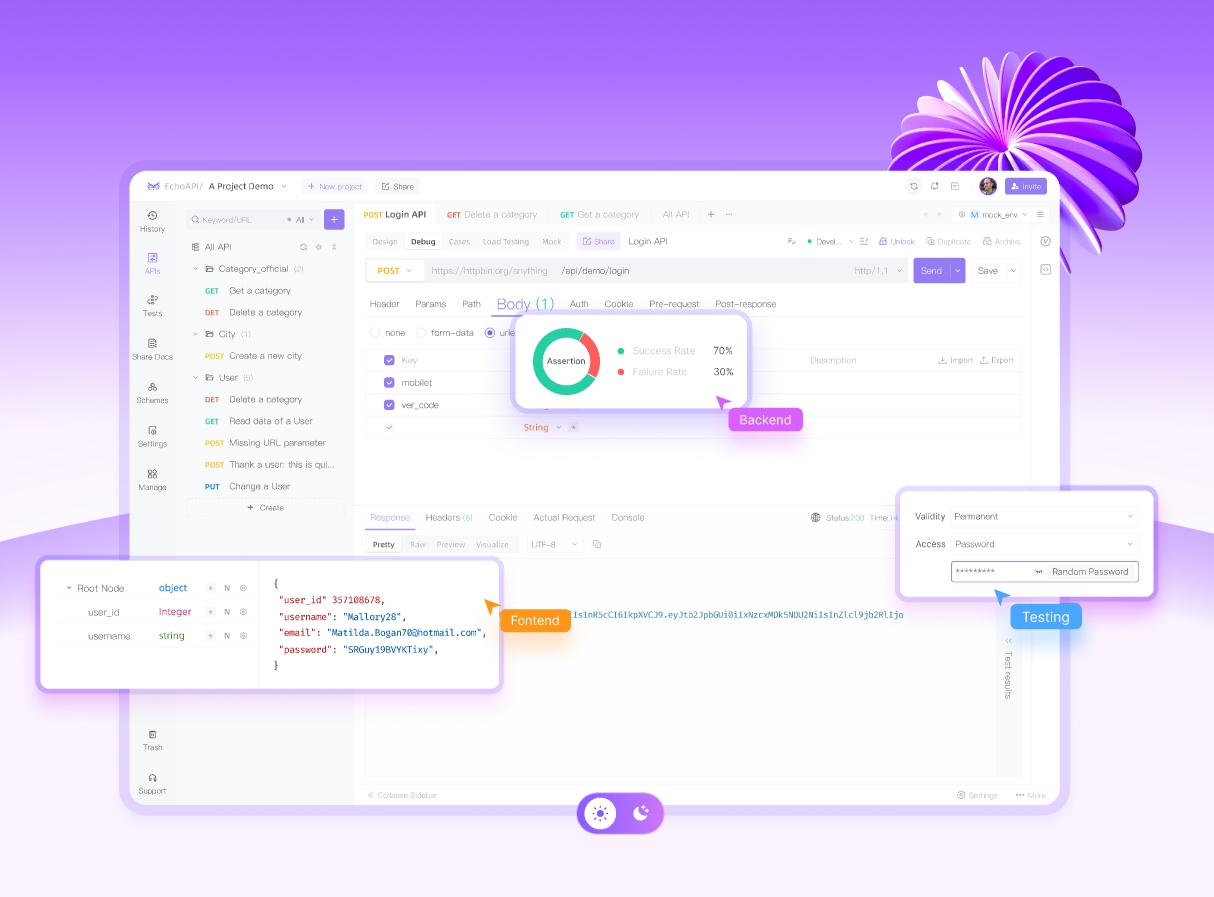
EchoAPI is a modern, versatile API debugging and testing tool that has quickly become a go-to for developers working on API-intensive projects. It is perfect for Go developers building microservices, as it supports a full spectrum of API design, testing, and documentation features.
Why Use EchoAPI?
- Multi-Protocol Support: Easily handle APIs using protocols like HTTP, SSE, GraphQL, WebSocket, TCP, and more.
- Authentication Made Easy: Built-in support for OAuth 2.0, JWT, Basic Auth, and many other authentication mechanisms.
- AI-Enhanced API Import: Automatically import API definitions from tools like Swagger, Postman, and Insomnia using its smart AI-powered interface recognition.
- Mocking & Load Testing: Quickly generate mock APIs and conduct stress tests to simulate real-world API interactions.
- Team Collaboration: Real-time data synchronization for team-based projects ensures everyone stays updated.
- Free Plugins: Seamless integrations with VS Code, IntelliJ IDEA, Chrome, and other platforms.
- Offline Mode: Work without internet connectivity, enhancing productivity anywhere, anytime.
Advantages:
- Combines API design, debugging, testing, and documentation into one powerful tool.
- Perfect for agile teams working with APIs or microservices.
- Facilitates integration into CI/CD pipelines for continuous testing and deployment.
- User-friendly interface with advanced protocol and authentication support for diverse workflows.
Downsides:
- Learning curve for exploring all its features if you're new to comprehensive API tools.
Ideal For:
Go developers working extensively with APIs, where rapid design, testing, and deployment are essential.
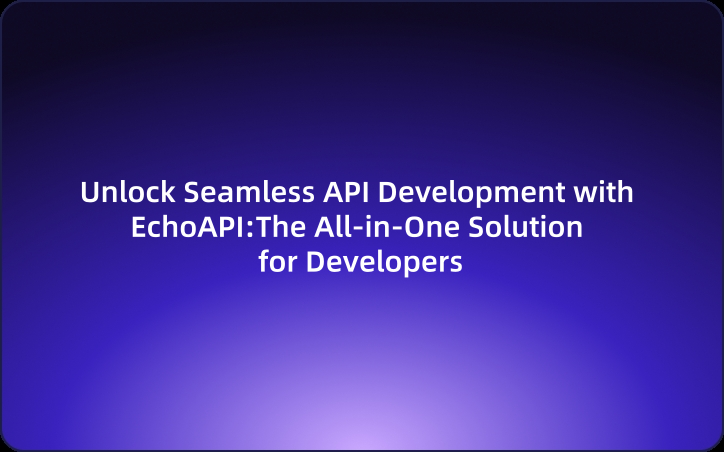
Conclusion
Go remains a powerhouse programming language in 2025, and with the right combination of tools, you can unlock its full potential. Whether you're coding scalable microservices using Gin Framework, debugging with Delve, or managing production-ready applications with Docker, these tools will streamline your workflow as a Go developer.
The choice comes down to your specific needs:
- If you’re seeking a full-fledged IDE, go with GoLand.
- For lightweight flexibility, VS Code wins.
- To excel in API development, pair Gin with EchoAPI.
With Go’s growing ecosystem, staying updated with the latest tools will empower you to build better, faster, and more scalable applications.




 EchoAPI for VS Code
EchoAPI for VS Code

 EchoAPI for IntelliJ IDEA
EchoAPI for IntelliJ IDEA

 EchoAPl-Interceptor
EchoAPl-Interceptor

 EchoAPl CLI
EchoAPl CLI
 EchoAPI Client
EchoAPI Client API Design
API Design
 API Debug
API Debug
 API Documentation
API Documentation
 Mock Server
Mock Server








